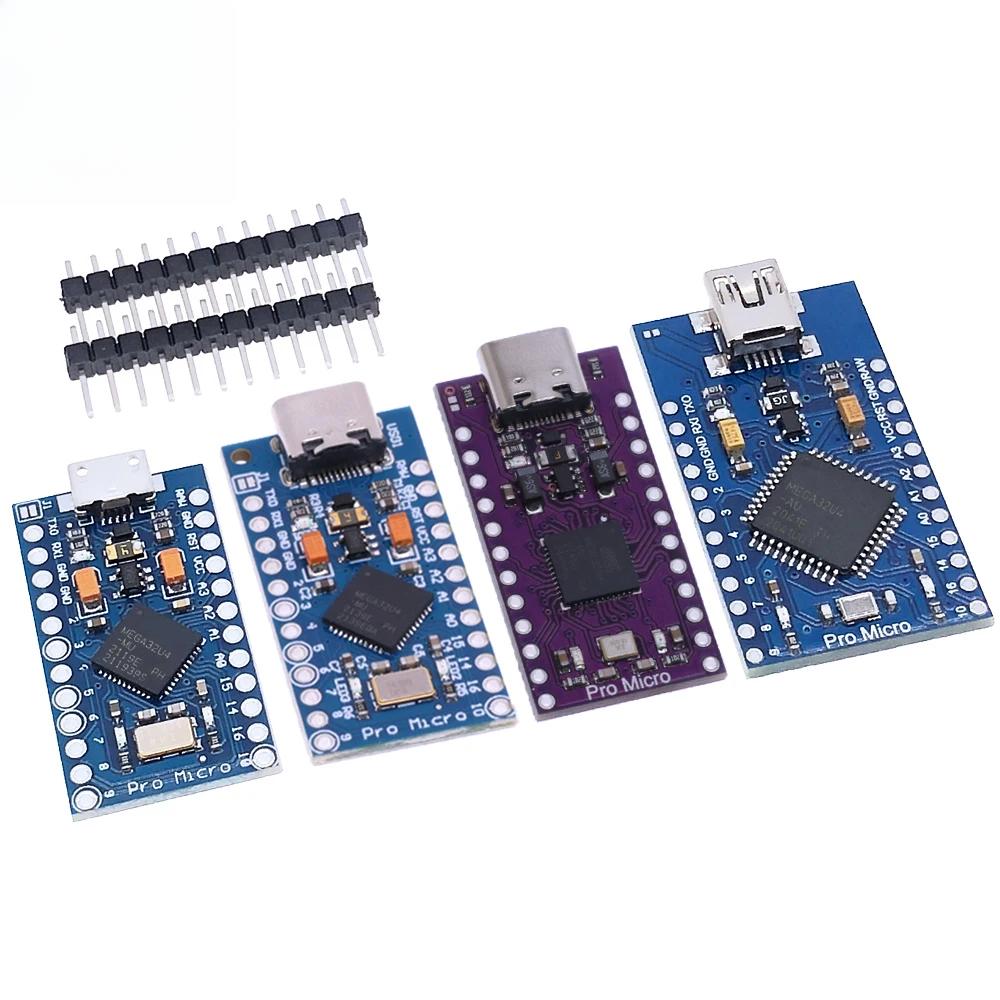Model Number : ATMEGA32U4
Dissipation Power : W
Supply Voltage : 5V
Application : Computer
Type : Voltage Regulator
Origin : China
Condition : New
Operating Temperature : -40-80
Mainly Push The Most Popular Products
Description:
The Pro Micro is similar to the Pro Mini except with an ATmega32U4
on board.
The USB transceiver inside the 32U4 allows us to add USB
connectivity on-board and do away with bulky external USB
interface.
· This tiny little board does all of the neat-o tricks that you're familiar
with: 4 channels of 10-bit ADC, 5 PWM pins, 12 DIOs as well as
hardware serial connections Rx and Tx. Running at 16MHz and 5V,
this board will remind you a lot of your other favorite compatible
boards but this little guy can go just about anywhere. There is a
voltage regulator on board so it can accept voltage up to 12VDC. If
you're supplying unregulated power to the board, be sure to
connect to the "RAW" pin on not VCC.
· This latest revision corrects the silk error from the last version of the
board so that pin 14 is correctly labeled. We've also added a PTC
fuse and diode protection to the power circuit and corrected the RX
and TX LED circuit.
Features:
· ATMega 32U4 running at 5V/16MHz
· Supported under IDE v1.0.1
· On-Board micro-USB connector for programming
· 4 x 10-bit ADC pins
· 12 x Digital I/Os (5 are PWM capable)
· Rx and Tx Hardware Serial Connections
Features:
· ATMega 32U4 running at 3.3V/8MHz/16Mhz
· Supported under IDE v1.0.1
· On-Board micro-USB connector for programming
· 4 x 10-bit ADC pins
· 12 x Digital I/Os (5 are PWM capable)
· Rx and Tx Hardware Serial Connections
· Our Smallest -Compatible Board Yet!
The line layout is compact and regular, with good electrical insulation and mechanical stability, and can maintain stable performance under different temperature and humidity environments to ensure accuracy and reliability.
In circuit design, carefully planned lines are like precision transportation networks, and lines of different widths and spacings undertake different currents and signals transmission tasks respectively. The key signal lines are impedance matching processing, which greatly reduces signal reflection and attenuation and ensures the stable transmission of high-frequency signals.
All kinds of electronic components are soldered on the circuit board, and the solder joints are full, round, and firm and reliable. Core components like chips are perfectly connected to the circuit board through fine packaging processes to achieve high-speed data processing and interaction.
This circuit board has a wide range of responses in many fields. Whether in the industrial control field that requires extremely high stability or consumer electronics field that pursues extreme performance, it can provide solid guarantees for the stable operation of the equipment with its excellent design and reliable performance, and help various electronic devices play a powerful role.































